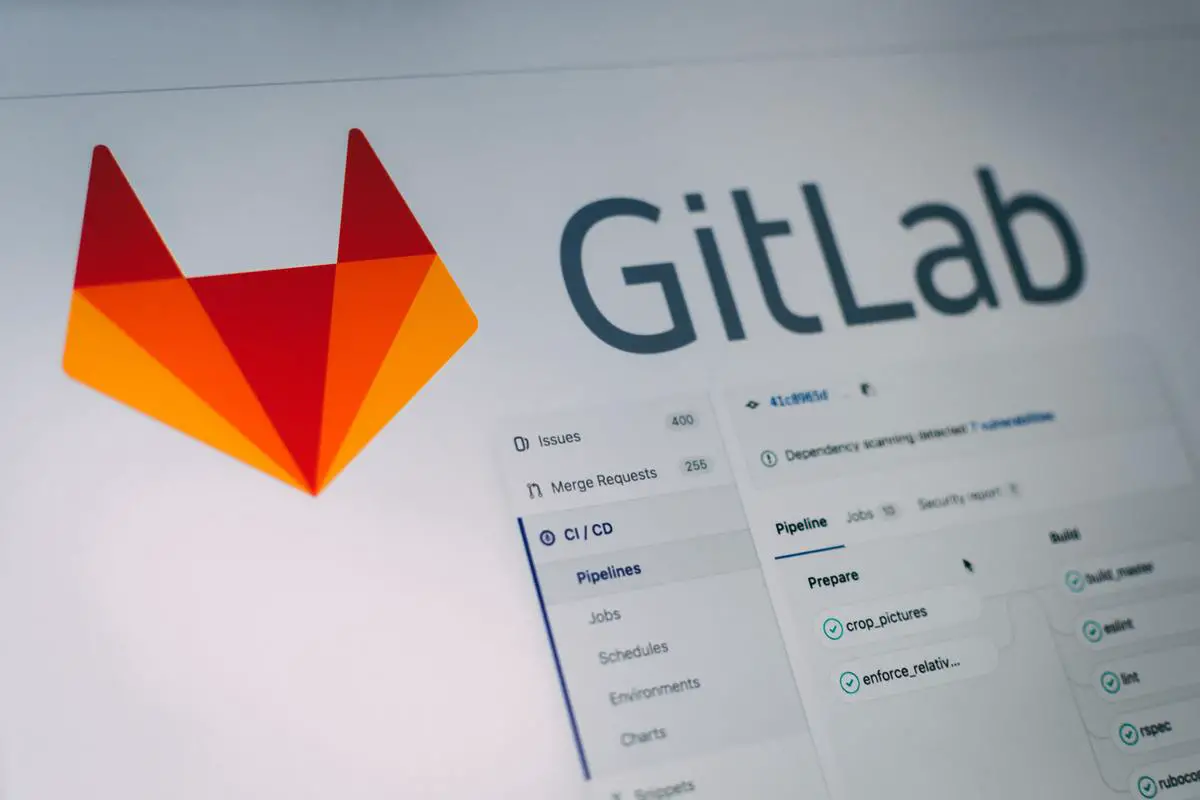Artificial Intelligence (AI) is a game-changer in every aspect of the technology landscape, and one such transformative entity is GPT-3. This OpenAI model aids in deciphering and generating human-like text, opening a new frontier in automation, specifically in the field of software testing and validation. This articlecasts a spotlight on GPT-3, rendering a comprehensive understanding of its innate capabilities. We delve deep into its attributes and functions that align seamlessly with automation principles and explore its application in software testing. Moreover, we illustrate a step-by-step integration of GPT-3 with GitHub for automated testing and walk through some insightful case studies that seal its efficacy in real-world testing scenarios.
Understanding GPT-3 and its capabilities
Table of Contents
Understanding GPT-3 and its Capabilities
Generative Pre-trained Transformer 3 (GPT-3) is an autoregressive language predictor developed by OpenAI. It derives its power from machine learning and neural networks to interpret and generate human-like text.
GPT-3 has garnered the attention of both tech enthusiasts and the industry for multiple reasons. Its language prediction capabilities are superior, processing large-scale datasets with around 175 billion machine learning parameters. This AI can draft human-like text that not only fits the required context but also avoids common grammar and language mistakes made by earlier models.
GPT-3 in Automated Testing
For automated testing, GPT-3’s versatility can be transformative. Traditional software testing and validation methodologies are often labor-intensive. By using GPT-3, the testing process is faster and more thorough.
In functional testing, artificial intelligence can predict and create test cases based on project requirements alone. GPT-3 can replicate user behaviors, generating additional sensible test cases to identify potential edge case scenarios that human testers might overlook.
For regression testing, GPT-3 could verify the software’s performance after modifications. The regression tests could then be infused with various realistic scenarios, forecasting potential system behaviors or issues, thus enhancing system stability.
Moreover, GPT-3 can provide real-time error reports with descriptive language, helping developers understand and resolve problems quickly.
Embracing GPT-3 in GitHub Validation
In the era of automation, GPT-3 stands out as a promising tool in enhancing GitHub workflows by streamlining automated testing and validation. The AI model can be productive in code reviewing, predicting potential code issues, proposing improvements, and generating code snippets that address detected bugs while adhering to the established coding standards.
Also, it assists in managing dependencies, evaluating cross-version software or library compatibility, thereby adding another layer of automation in the validation process.
Beyond coding, GPT-3 learns valuable insights from historical code submissions, adopting coding best practices which can be advantageous in continuous integration and delivery pipelines. As a powerful learning mechanism, GPT-3 constantly evolves becoming more adept in handling future tasks.
In a nutshell, the superior language prediction capabilities, adaptability, continual learning, and example-based approach of GPT-3 make it an invaluable asset for automated testing and validation in GitHub workflows. This AI model not only automates repetitive tasks but also aids in complex situations, thus revolutionizing the testing and validation process in software development.
GPT-3 and automation
The Power of Automation
Automation, the technology-powered execution and control of repetitive tasks, aims to alleviate tedious manual work. The key benefits of automation include process streamlining, increased productivity, and a significant reduction in human errors, thereby saving resources such as time and monetary investment. With applications ranging from manufacturing to IT systems, automation has seen a dramatic surge, attributed to the relentless advancements in AI technologies, such as GPT-3.
GPT-3: AI Fueling Automation
Launched by OpenAI, Generative Pretrained Transformer 3 (GPT-3) is an autoregressive language model that leverages machine learning to perform tasks that involve natural language understanding and generation. Without needing task-specific training data, GPT-3 can create human-like text by predicting what comes next based on the input it receives.
GPT-3 fits perfectly into the automation framework with its capabilities of text generation and decision-making algorithms. It provides support to multiple languages and contexts, thereby enabling seamless interaction in automated systems.
GPT-3 in Automation: The Benefits
The potential benefits of GPT-3 in automation are numerous. First, its highly sophisticated AI model offers unprecedented accuracy in processing and interpreting language that forms the backbone of communication in automated systems. This reduces the probability of semantic errors, thereby enhancing the efficiency of the automated tasks.
Secondly, it offers the possibility of automating complex tasks that rely heavily on natural language understanding, including writing emails, answering questions, creating written content, translating languages and even coding. This aids in the reduction of repetitive human tasks, improving productivity levels.
Thirdly, given the self-learning capabilities of GPT-3, it can adapt over time, leading to continuous improvement in the handling and decision-making processes of automated systems.
GPT-3 for Automated Testing and Validation on GitHub
GitHub, being a platform that hosts millions of developers working together to host, review code and build software, sees a great advantage of GPT-3 in its automation process. The AI model can be used in automated testing and validation on GitHub.
In testing, GPT-3 can simulate user behavior and responses in various scenarios, hence reducing the need for human intervention. By unpredictably mimicking user actions, it can help unearth bugs that might have been overlooked during regular testing sessions.
In terms of validation, GPT-3 can discern the correctness of code by understanding the human language used within the code comments and instructions. This allows the AI to ensure that the written code aligns with the intended functionality.
The Potential of GPT-3 in Testing and Validation Automation on GitHub
The integration of GPT-3 into the process of automating testing and validation on platforms such as GitHub can substantially improve the speed, precision, and effectiveness of these procedures. Moreover, it allows humans to allocate more time for performing tasks that require strategic thinking, such as creative ideation and complex problem resolution.

GPT-3 in Software Testing
An Insight Into GPT-3’s Role in Software Testing
Generative Pre-trained Transformer 3, also known as GPT-3, represents one of the latest breakthroughs in the field of artificial intelligence. It was brought into existence by OpenAI and is a language prediction tool with a striking capacity to generate human-sounding text in response to certain prompts. In the context of software testing, this AI-driven model is a highly suitable match for automated testing efforts, thanks to its aptitude in comprehending context and syntax.
GPT-3 and Automated Software Testing
In the world of software development, automated testing is vital for the efficient and effective detection of bugs and errors. It speeds up the process, minimizes human error, and can significantly enhance the overall quality of the applications under test. In this realm of automated testing, GPT-3 plays a significant role due to its large-scale language generation capabilities.
The flexible language comprehension of GPT-3 allows it to understand test scenarios, interpret test cases, and predict potential debug outputs. It can also recreate intricate test cases and even automate the process of writing unit tests to a certain extent. With the sheer volume of automation facilitated by GPT-3, developers can focus on honing their code, while the model substantively streamlines the testing phase.
Moreover, GPT-3’s remarkable ability to understand context enables it to comprehend specific requirements and work towards accurate validation of software — a process that automated testing tools may struggle with.
GPT-3 and GitHub Validations
GitHub, being a widely used platform hosting millions of developers, has a significant need for automated testing and validation. Adopting GPT-3 for these processes means GitHub can potentially automate the review of pull requests, validation of code changes, and even the detection of security vulnerabilities in the code.
Instead of manually perusing each pull request, GPT-3 can be leveraged to automatically review the changes, thus saving developers and contributors a considerable amount of time. When integrated intelligently, the AI can effectively pick up on subtleties in large codebases and predict potential issues, thereby improving the overall code quality.
Even when it comes to code validation, GPT-3 can overcome the challenge of understanding context, which is usually difficult for traditional automated validation tools. Given a history of code and comments, GPT-3 can predict future patterns and validate if the code changes align with the expected pattern.
Tapping into the Potential of GPT-3 for Comprehensive Testing
We see the profound impacts of GPT-3 in a variety of applications, key among them being GitHub Copilot, a tool powered by GPT-3’s AI capabilities. This predictive coding assistant steps in to suggest complete code lines or even multiple blocks of code, exponentially speeding up the development process. It acts like a digital teammate to developers, assisting with tasks like automated coding and bug fixing.
To cap it off, the benefits of applying GPT-3 for automated testing, especially on a platform like GitHub, are substantial. It facilitates a faster and more comfortable code review process, bolsters automated testing, and streamlines debugging. With GPT-3 in their arsenal, development teams have a chance to build safer, more efficient, high-quality software while conserving time and resources.

Integrating GPT-3 with GitHub for Testing
Decoding the Synergy between GPT-3 and GitHub
At its core, GPT-3, or Generative Pre-trained Transformer 3, is an AI model created by OpenAI. It harnesses the power of machine learning to produce text that mimics human writing. It’s highly versatile, capable of writing articles, responding to queries, and performing other tasks with few specific inputs.
GitHub, in contrast, is a renowned platform favored for its code-hosting capabilities, allowing for seamless code review and collaboration. If we were to marry the capabilities of GPT-3 with GitHub’s strengths, we could create a system capable of intelligent code testing and automatic corrections. This could potentially revolutionize how we perceive efficiency and effectiveness in software development and testing.
Procedure for Integrating GPT-3 with GitHub
To integrate GPT-3 with GitHub for automated testing and validation, specific instructions have to be followed. First off, one would need to obtain API access to GPT-3 from OpenAI. API access is currently in a restricted access beta, but you can request access on the OpenAI website.
After obtaining the API keys, you can create GitHub Actions that send specific code samples from your repository to the GPT-3 API for evaluation. GitHub Actions enable the construction of automated software development workflows directly in GitHub repositories.
Designing Automated Tests with GPT-3
Designing tests with GPT-3 involves defining the scenarios that you would like the AI to review, along with the expected results. Despite being machine learning-based, GPT-3 should not alter the code in your repository. Instead, it will return a generated text output corresponding to the inputs sent. Your GitHub Actions workflow will need to process and interpret this output.
Interpreting Test Results
Interpreting test results is the crucial part of automated testing and validation with GPT-3. Test results can be categorized as pass or fail based on whether they meet the predefined conditions that were specified in the test scenarios. A failed result indicates that the feature being tested might not meet the requirements or there could be a potential issue in the code. Any discrepancies should be thoroughly investigated by the development team.
Advantages of Integrating GPT-3
Integrating GPT-3 for automated testing bears substantial benefits. Such a process can streamline development cycles, enabling quicker detection and resolution of coding errors or bugs. Additionally, it serves as a useful tool to uphold code quality standards, as GPT-3’s training on best practices can support the consistent enforcement of these standards across the developer team.
However, it is crucial to highlight that AI-powered testing using GPT-3 isn’t meant to entirely replace human intervention and verification. The cutting-edge application of GPT-3 should instead be perceived as a supportive tool that eases developers’ tasks, rather than a foolproof solution that eliminates the requirement for their skills and insight.

Photo by pankajpatel on Unsplash
Case Studies of GPT-3 in GitHub testing
The Role of GPT-3 in GitHub Testing
GPT-3, the acronym for Generative Pretrained Transformer 3, is a top-tier artificial intelligence software formulated by OpenAI. Armed with natural language understanding skills, GPT-3 has showcased its ability to produce text that is strikingly similar to that written by humans with high accuracy. This functionality spans a vast array of tasks, comprising testing and validation tasks on collaborative platforms such as GitHub.
Case Study 1: Automated Code Review and Bug Detection
One of GPT-3’s most impressive applications in GitHub testing lies in automated code review and bug detection. In one such case, a software development firm implemented GPT-3 into their GitHub repositories. The AI was tasked with reviewing pull requests, identifying any potential errors or inefficiencies in the proposed changes.
GPT-3’s ability to understand natural language processing enabled it to parse and respond to comments within the code, offering suggested alterations when it identified potential issues. By implementing GPT-3, the firm significantly reduced the time spent on code reviews and bug detection, thus accelerating their overall development process.
Case Study 2: Generating Test Cases
Another interesting use case involved GPT-3 in generating test cases. Here, the AI model was used to automate the creation of testing scenarios based on the expected functionality of an application’s software components listed in GitHub.
Despite the complexity of the task, GPT-3 pulled off the task with great proficiency. It was able to leverage the training data it received and apply the knowledge to generate comprehensive testing cases. This case showed not only the efficiency but also the depth of GPT-3’s understanding of software development processes.
Case Study 3: Automated Documentation
GPT-3 has also proven its worth in creating and updating software documentation. In many software development projects, keeping up-to-date, accurate, and clear documentation is crucial but can become time-consuming. However, one software house decided to utilize GPT-3 in automating their documentation process.
Trainable on software requirement specifications, technical manuals, and other related content, GPT-3 began creating maintenance documentation for the software house’s project. Comments and explanations were accurate and concise, and the documentation was updated in real-time based on the changes made to the source code.
Underlining the Impact And Advantages
These case studies reflect how GPT-3 can drastically improve efficiency, accuracy, and collaboration in GitHub testing scenarios. By automating the traditionally labor-intensive tasks of code review, bug detection, test case generation, and documentation, teams can focus more on innovative software development.
Taking advantage of the ever-evolving AI technology like GPT-3 is quickly becoming vital for competitive software development. It not only accelerates the development process but also greatly reduces human error, ensuring high-quality outputs and, ultimately, a superior end product.

Automation, especially in software testing, is no longer a luxury but a necessity. GPT-3, with its human-like text capabilities, has paved the way for a radical change in automated software testing and validation. The AI model, when integrated with GitHub, yields productive outcomes, driving efficiency and accuracy. Its holistic application in transforming how tests are created, executed, and evaluated, underscores a profound shift in testing culture. As we navigate through an array of case studies, the tangible impact of GPT-3 in real-world scenarios becomes apparent. Therefore, evolving our understanding and skills around GPT-3 is an investment towards an innovative, efficient, and future-ready testing paradigm.

I’m Dave, a passionate advocate and follower of all things AI. I am captivated by the marvels of artificial intelligence and how it continues to revolutionize our world every single day.
My fascination extends across the entire AI spectrum, but I have a special place in my heart for AgentGPT and AutoGPT. I am consistently amazed by the power and versatility of these tools, and I believe they hold the key to transforming how we interact with information and each other.
As I continue my journey in the vast world of AI, I look forward to exploring the ever-evolving capabilities of these technologies and sharing my insights and learnings with all of you. So let’s dive deep into the realm of AI together, and discover the limitless possibilities it offers!
Interests: Artificial Intelligence, AgentGPT, AutoGPT, Machine Learning, Natural Language Processing, Deep Learning, Conversational AI.

